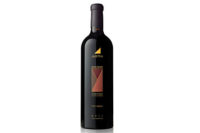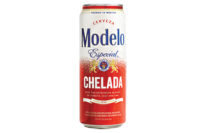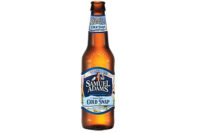Domestic beer case sales decline
Super-premium beer segment shows potential




The beer category, which includes domestic beer, imported beer, craft beer, hard cider and flavored malt beverages, has mostly remained flat or suffered minimal declines in off-premise accounts in recent years, according to market research firms. In 2013, the category increased 0.1 percent in case sales and 3.1 percent in dollar sales, says Andrea Riberi, senior vice president of alcohol beverages with Nielsen, New York.
| Click here to go back to the 2014 Beer Category Report landing page. |
“There’s been a lot of talk about beer’s weak performance in 2013, but we should still keep in mind that the category finished out with positive growth trends in all Nielsen-measured channels, and it’s still the second-largest category that we measure,” she notes.
Hard ciders are leading category growth, boasting a 101 percent increase in case sales for the 52 weeks ending Dec. 29, 2013, in U.S. supermarkets, drug stores, mass merchandisers, gas and convenience stores, military commissaries, and select club and dollar retail chains compared with the prior-year period, according to Information Resources Inc. (IRI), a Chicago-based market research firm. On the other end of the spectrum, domestic beers have suffered declines, according to market research firms. Case sales for domestic beer declined 3 percent last year, Nielsen’s Riberi says. She attributes this decline to the premium light, premium regular and sub-premium price segments.
Nielsen categorizes domestic beers by four price segments: sub-premium, premium light, premium regular and super-premium, Riberi notes. The premium price segment, including both light and regular beers, was down 3 percent last year, she says. And although some sub-premium retro brands like Pabst Brewing Co.’s Pabst Blue Ribbon have shown growth, the sub-premium price segment as a whole was down 4 percent last year, she says.
This performance is a result of the economy, says Jeff Nowicki, chief strategy officer for Bump Williams Consulting Co., Stratford, Conn. Consumers who typically drink sub-premium domestic beers have less disposable income, which has resulted in them purchasing less, he explains.
On the other hand, super-premium beers gained 2 percent in case volume, Nielsen’s Riberi notes. This reflects a shift toward premiumization within the category, she says.
This move toward super-premium beers impacts dollar sales positively but volume sales negatively, Bump Williams’ Nowicki explains. The premiumization trend also has been driven by price increases among some of the sub-premium brands, which have narrowed the gap between the premium price segment and the sub-premium price segment, thus encouraging consumers to upgrade, he suggests. On average, prices of domestic beers in 2013 increased 3 percent, Nielsen’s Riberi notes.
Additionally, consumer demand for more flavorful beers has impacted the sub-premium segment, adds Edward Hyseh, U.S. research analyst at Euromonitor International, Chicago.
This demand for flavor might result in the purchase of super-premium or craft beers, but it also could pique consumer interest in seasonal and/or ethnic flavors, Nielsen’s Riberi says. For instance, MillerCoors announced that it will release a citrus-flavored summer seasonal under its Coors Light brand this year, she says. Additionally, dollar sales for Anheuser-Busch’s Mexican-inspired Bud Light Chelada increased double-digits last year, according to IRI data.
Beers with higher alcohol content also could help the category to better compete with wine and spirits, Nielsen’s Riberi notes. Last month, MillerCoors introduced Miller Fortune, which contains 6.9 percent alcohol by volume.
Domestic beers also are looking to gain an edge through packaging innovation, experts say. For instance, in January MillerCoors reintroduced its original Miller Lite can for a limited time. The company also released Punch Top Cans and resealable aluminum pints in recent years. Likewise, Anheuser-Busch launched the Bud Light Vented Can last summer and added a resealable aluminum pint format to its cobalt-blue-colored Bud Light Platinum brand.
Bump Williams’ Nowicki notes that these flavor and packaging innovations could continue to be important for the segment. “With the consumer paradigm changing to trying more styles and more flavors, … if [brewers] continue to innovate and progress in those directions — whether it’s a container or whether it’s a style like [Bud Light] Platinum — you’ll see some consumer excitement around it and attention to it,” he says.
Nowicki expects sub-premium and premium domestic beers to be flat or down this year and the overall beer category to increase approximately 3 percent in dollar sales and as much as 1 percent in volume sales. By comparison, Chicago-based Mintel forecasts that volume sales for the domestic segment will increase by 0.5 percent this year, according to its December 2013 report on the U.S. beer category.
Looking for a reprint of this article?
From high-res PDFs to custom plaques, order your copy today!








